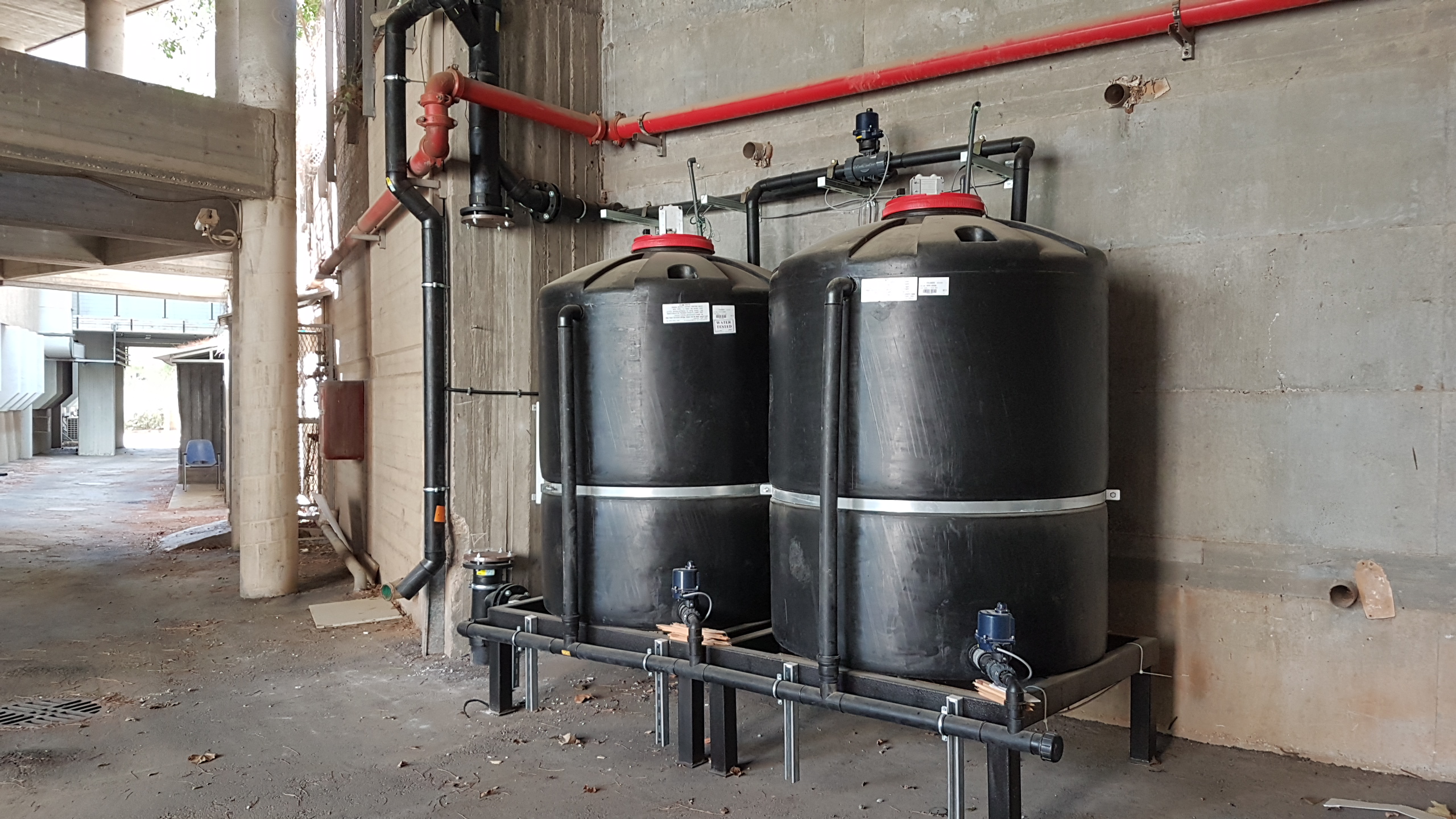Jellyfish outbreaks might cost Israel millions each year
November 2, 2018Power stations and desalination plants along Israel's Mediterranean coast are struggling with jellyfish invasions
Israeli summers are long, often extending far into October. But now, almost unnoticeably, the hot season has begun to slowly creep away, leaving us with only a few more days to bid farewell and the very last chances to have a nice warm dip in the sea. For beachgoers, it is also the time to say goodbye to jellyfish, every swimmer’s nightmare in summer. But the truth is that they will be here even long after the last of us have left the water, to potentially wreak havoc on some of Israel’s most vital structures – power stations and desalination plants.
Annual monetary loss of up to €6.2 million
The occurrence of large Jellyfish outbreaks in the Mediterranean Sea, of both native and invasive species, has become increasingly frequent in the last three decades. Jellyfish and Israel have a history together that stretches back at least 80 years, to 1935, when the first jellyfish appearances were recorded. Since 1986, large jellyfish outbreaks are regularly observed during the summer months between May and August, which is also the peak season for swimmers, surfers, and other leisure seekers. Unique about the situation in Israel is the fact that the majority of these jellyfish belong to one of six invasive species that have overrun the eastern basin of the Mediterranean Sea. Many invasive species found their way to the eastern Mediterranean from the Indian Ocean, following the opening of the Suez Canal in 1889. Others have their origin in the Black Sea. In the western basin, jellyfish outbreaks consist mainly of indigenous species.
Native or invasive, jellyfish can make swimming along Israel’s coast a very unpleasant experience during summer, especially at times of large outbreaks. When that happens, many people avoid the water while others stay away from beaches altogether, which harms restaurants and other businesses located along the waterfront. Also in other places of the world, excessive jellyfish blooms pose a significant problem, with consequences that reach beyond the irritating burns. Large outbreaks can deliver a substantial blow to the economy by causing the closure of entire bathing beaches, as it was the case in eastern Spain earlier this year.

A study has found that jellyfish outbreaks in Israeli waters are responsible for a 3-10.5 percent decline in the number of seaside visits, resulting in an annual monetary loss of up to €6.2 million.
However, a financial loss does not only stem from the adverse effects jellyfish has on tourism, but also from the damage it inflicts on important infrastructure located along the coast such as electric power stations and desalination plants.
Israel has five coastal power plants. As part of the plant’s operation, water is being pumped from the sea to cool the generators. During this procedure, huge swarms of jellyfish might find their way into the suction openings and block the pumps, which potentially compromises the activity of the plant. If a pump gets clogged, the jellyfish has to be removed in an expensive and complicated process. Moreover, the attempts to remove the jellyfish from the pumps are not always sufficient. Incursions by large swarms may require the closure of an entire electricity generation unit in order not to risk its activities, a step that is very expensive and also prone to cause electricity shortages. In 2011, a nuclear power plant shut down in Scotland for several days following the blocking of the cooling water pumps by jellyfish. A similar case occurred in Sweden in 2013.
Jellyfish are sucked into desalination plants
Other coastal infrastructures susceptible to damage from jellyfish are desalination plants. As with power stations, the desalination facilities pump seawater through an intake point, located a few meters underwater. These intake points are liable to get blocked by jellyfish, which in the past has led to temporary closures of whole desalination plants in Israel.
The most critical damage to desalination plants along the Israeli Mediterranean coast is brought about by the comb jelly, a jellyfish-like marine invertebrate (covered with cilia for swimming), that arrived at the Levant region from the Black Sea about ten years ago. Comb jellies are relatively small (about 10 cm), and their bodies are soft; therefore, they do not block the water pumps but are sucked with the water into the plant itself. Having to remove the jellyfish from the water during desalination considerably impedes the entire process.

By interfering with the activity of desalination plants, jellyfish have struck an essential lifeline in this region. Following the opening of its first national desalination plant in 2005, Israel has grown more and more dependent on the practice of seawater desalination for drinking water. Due to perpetual water shortages, the country now relies on desalination for up to 75 percent of its household’s drinking water. Moreover, water supply in Israel accounts for approximately 10 percent of its total electricity production, of which 4-5 percent is made up of desalination.
Here come the winter jellyfish
At the University of Haifa, a team of scientists, supervised by Dr. Dror Angel of the Department of Marine Civilizations at the School of Marine Sciences, is researching the occurrences of jellyfish along the Israeli Mediterranean coast. Having a better understanding of the movement of jellyfish swarms may help to reduce the entailing economic damage by preparing in advance for their arrival. However, this is not always a simple matter, and the swarms of the past year have demonstrated this all too well. “We had a strange year,” says Dr. Dor Adelist, a marine ecologist at Dr. Angel’s lab. “The summer was relatively jellyfish-free, but at the end of August and the beginning of September, young jellyfish suddenly reached our area, and are now located 300 meters offshore.”
Adalist says there are regular patterns in the movement of jellyfish. In July shorelines tend to be full of jellyfish, while in August there are almost none. Nevertheless, there is still a lot of research missing. “Many factors influence patterns of jellyfish appearances,” he says. “Every time you think you know something about the sea, jellyfish come and teach you better.”
One of the major discoveries of recent years is the scope and quantity of winter jellyfish. It turns out that swarms of winter jellyfish come to the Israeli Mediterranean coast much more frequently than previously thought, and the swarms are also greater than those occurring in summer, which begs the question: Will it happen again this winter? Judging by the number of jellyfish that are currently filling the coastal waters, it is possible. “After the last swarm we had in the fall of 2013, two consecutive years followed with lots of jellyfish during winter,” says Adelist. “You can expect it to happen again this time, but it’s still pretty wild speculation.”
Citizens against jellyfish
One attempt to improve the understanding of the movement of jellyfish swarms is a website on which jellyfish sightings can be reported and tracked in real-time. Adelist is part of a team that runs the website, providing detailed and up to date information of jellyfish along Israeli beaches. The data from the site may help to reduce the damage to the cultural aspect of the beaches: Instead of giving up on recreation at the beach for fear of jellyfish, people can simply visit the website and look for areas that are currently jellyfish free. Lifeguards are also updated so that they can place purple flags at rescue stations near beaches with high jellyfish occurrences. Big data collected on the site can also be used by large companies and organizations whose activity might be affected by the presence of jellyfish.
There are precautionary measures designed to prevent jellyfish from harming coastal power stations, such as pre-operating other generating units or blocking the connection to the sea of the pools from which the water is pumped. However, in order for such deployment to be carried out in the best possible manner, more precise information is required than that provided on the website today. “The project works almost entirely on a volunteer basis,” says Adelist. “More funding is needed, for example, to place cameras in the water, or conduct accurate scientific surveys on the presence of jellyfish, and incorporate technology into them, like drones and other advanced means that will follow the swarms.”
This story was created by *ZAVIT – Israel’s Science and Environment News Agency







